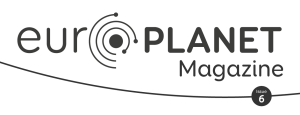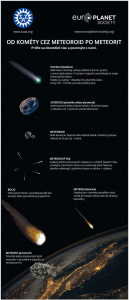Orionids Workshop 2023
Miloš Obert, Chair of the Slovak Union of Astronomers, reports on a weekend astro-camp on meteor observations.
Read article in the fully formatted PDF of the Europlanet Magazine.
Visual meteor observing is one of the areas of astronomy where amateur observations are important. This kind of observation has a long tradition in our country, Slovakia, although it has been on the decline recently. The Slovak Union of Astronomers is an institution that brings together professionals and amateurs for the popularisation and development of astronomy in Slovakia. From 20-22 October 2023, we organised the Orionids 2023 workshop for people who are interested in meteor showers, with financial support from our friends at the Europlanet Society.
The week before the workshop, we looked with concern at the weather reports – the forecast indicated freezing conditions with rain and snow flurries for our meeting in Banská Štiavnica (a UNESCO World Heritage site in central Slovakia). Not all aspects of the forecast came true, but it did rain. In fact, despite it being the second half of October, the night temperature was 18 °C, but cloudy.
On Friday, participants and lecturers started to gather at the hut, where I was already waiting with dinner prepared. There was a fire in the fireplace, but the environment was still a little chilly. This was not important, however, because we met in a friendly astronomical atmosphere that warmed us even more than the fire.
According to the workshop programme, we were supposed to move slowly to the meadow and get ready to observe. However, as we would have only been counting raindrops instead of meteors, we began with the alternative programme. Roman Mikušinec started the meeting with a short overview of the basics of meteor observation and introduced us to the terminology. All participants were given handouts that included a brief observers’ manual, protocols, International Meteor Organization (IMO) triangles and gnomonic sky-projections to plot the paths of the meteor trails. In his presentation, Jaro Gerboš outlined alternative approaches for recording observations, for example what to do if an observer is alone and is also the recorder. The presentation was enriched with P. Rapavý’s stories of past observations, such as how the group travelled to the Khurel Togoot Observatory in Mongolia in 1998 and observed the Leonids at -35°C, and how the lingering trail of a bright bolide drew a heart across the sky, like a perfect postcard image. Another time, in Spain, when the forecast of the maximum of the Leonids was already almost 100 percent, they experienced a short-term frequency of about 10,000 meteors per hour!
Before we knew it, it was past midnight. After the lectures were over, some of us continued discussions until almost five am.
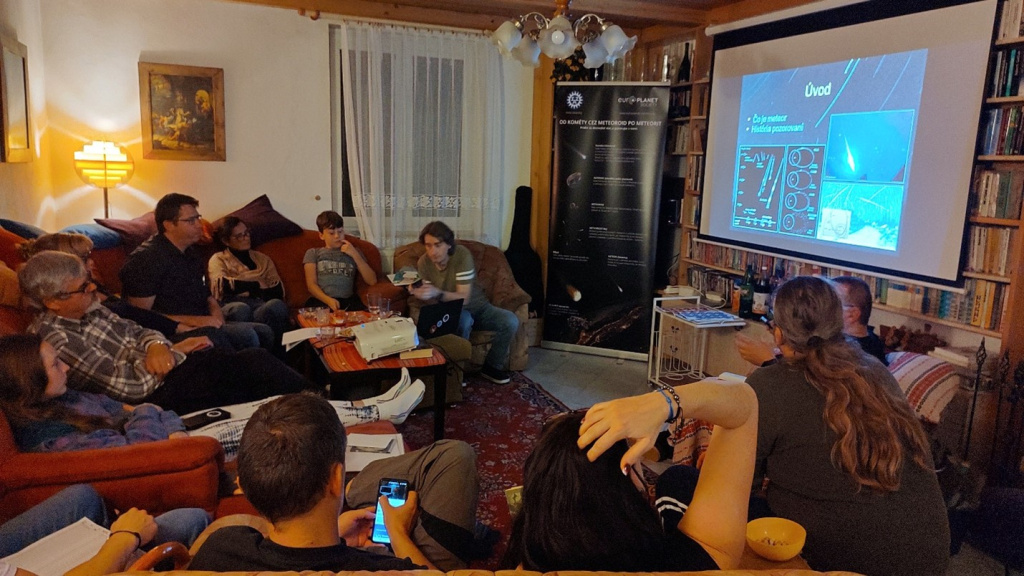
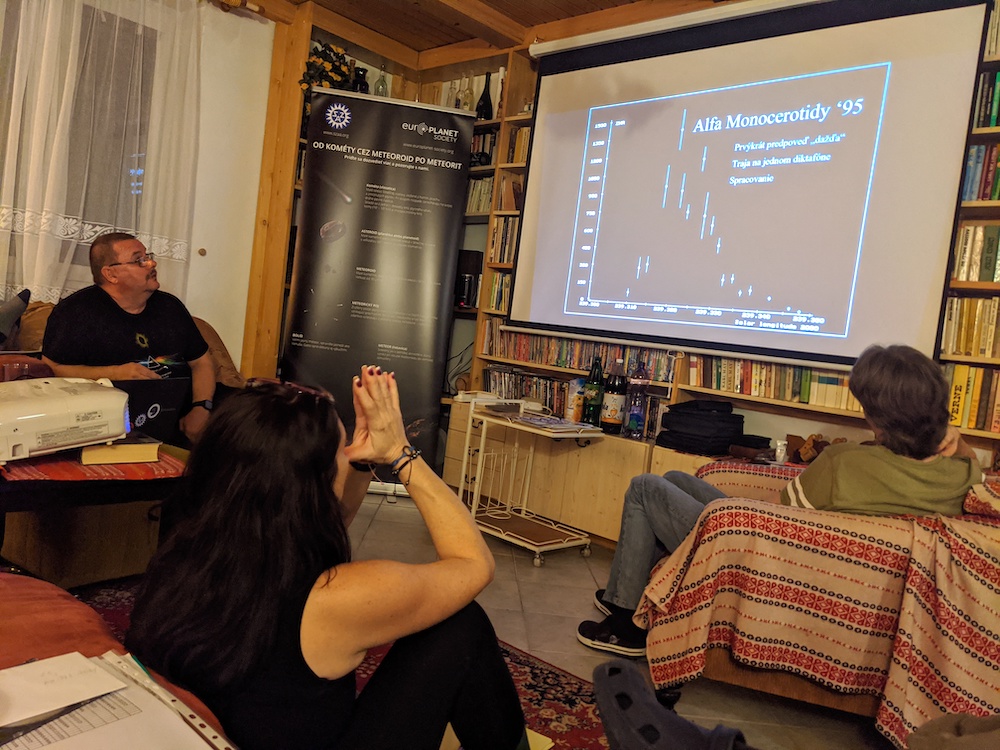
In the morning, when I got up, some of the participants were already eating breakfast. Over coffee I checked the weather forecast, but the situation for the evening had not improved – in fact, quite the opposite. We were stuck with the alternative programme.
Lectures were continued by Jožko Kováč, who also teaches about meteors at the Post-Secondary School of Astronomy (PSA) in Hurbanova. For some people, who had attended the school, it was a repetition of information; but repetition is never bad, and often represents an opportunity to gain a new perspective.
After covering lots of theoretical information, we started the practical part of the programme in the warmth of the hut. Jaro Gerboš switched on an old laptop and ran a computer program that simulates meteor swarms. He had prepared a setup simulating two meteor showers and sporadic meteors. We elected someone to act as the recorder and got down to ‘observing’, complete with darkness, a red headlamp, a radio clock, a log and a pen. The lecturers listened attentively and corrected us (“You’re reporting it wrong! Quiet when someone is reporting…”) and, after about half an hour, they were satisfied with the course of the observation.
We spent about two hours of pure observation time. A note was added to some of the data because we were not sure if the correct swarm had been identified. But we had the opportunity to evaluate and compare the accuracy of the reported data afterwards with the software recording of the generated data. The sky was still hopelessly overcast and it was raining, so we ended the programme at about one o’clock.
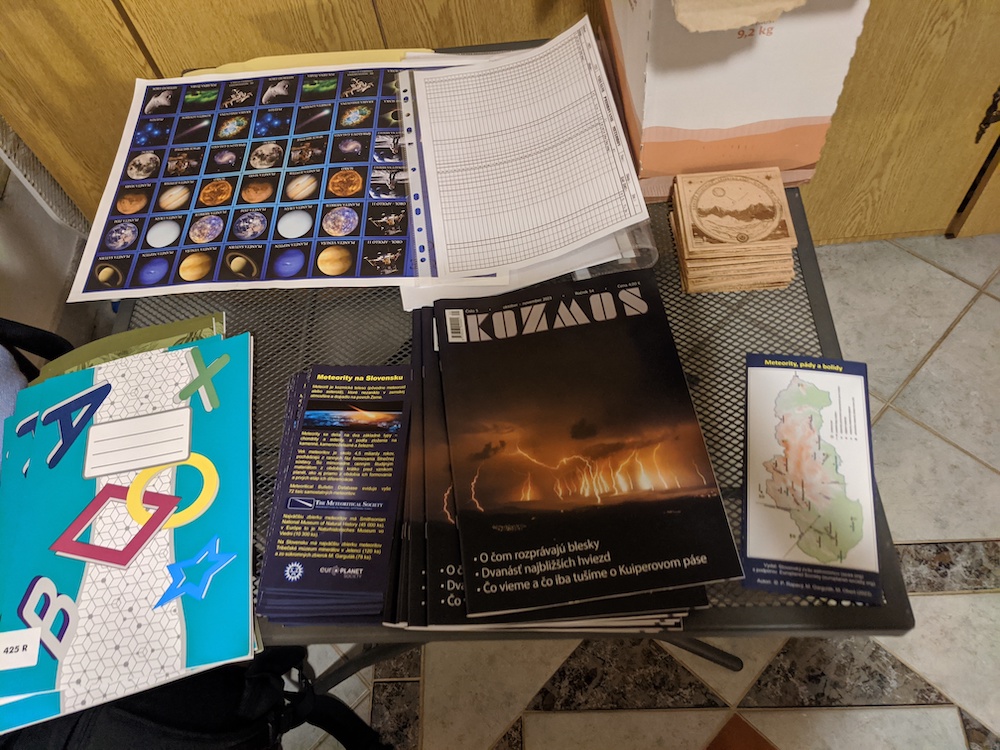
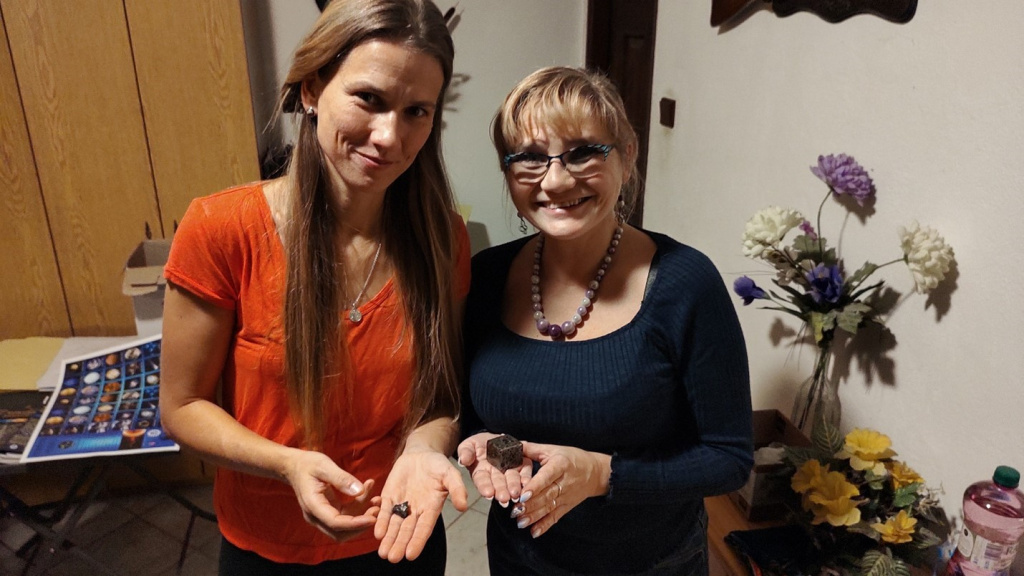
The last day focused on data evaluation. We looked at how well we had determined the swarm and magnitude of the meteors, to the satisfaction of the lecturers. We evaluated the observations, calculated the frequency and magnitude distribution, and learned how to fill out the IMO’s reporting protocol. For group observations, the processing was facilitated by Jaro’s ‘ImoProt’ program, which he developed for these purposes. However, we also practised the manual method and looked at where and how to enter data into the IMO page.
An outcome of the workshop will be the publication of a complete manual for visual observers, in the Slovak language, which will be available in due course on our website. I believe that the participants of the workshop, as well as the lecturers, learned something new and it was certainly an enjoyable and useful time spent with a good team. We were only able to experience a computer projection on this occasion, and the real joy comes from the true experience with ‘shooting stars’ under a beautiful starry night sky. Everyone agreed that they are looking forward to opportunities for ‘real world’ observations in the future. Nonetheless, the event was beneficial for community building and international networking, taking the work of the association to another level, for which we thank everyone involved.
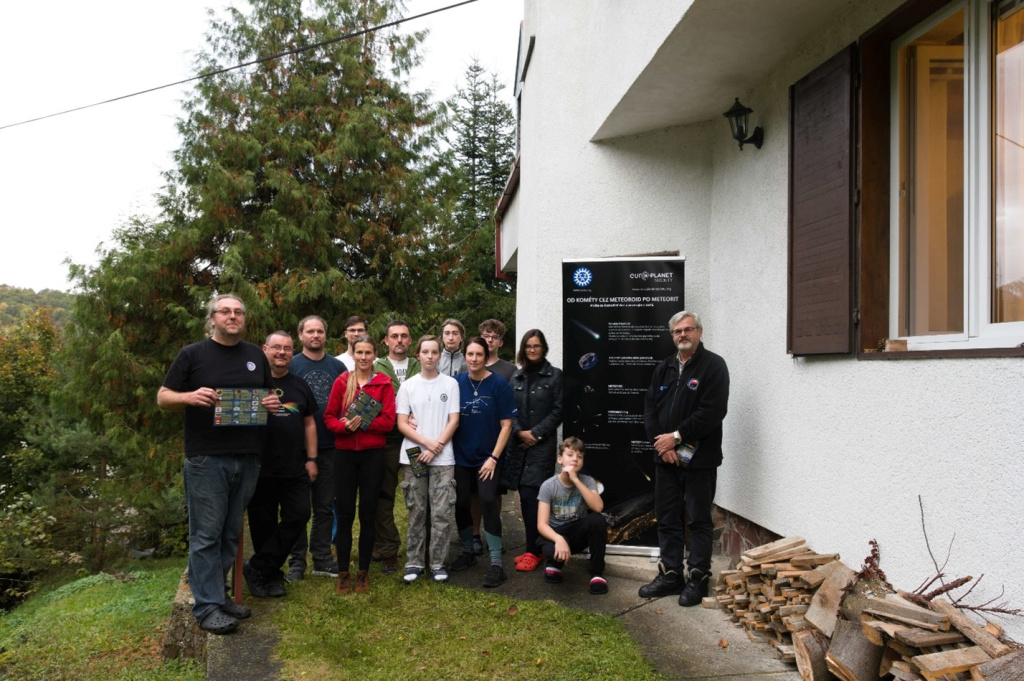
Find out more
IMO: https://www.imo.net
Slovak Astronomical Union: https://www.szaa.org

